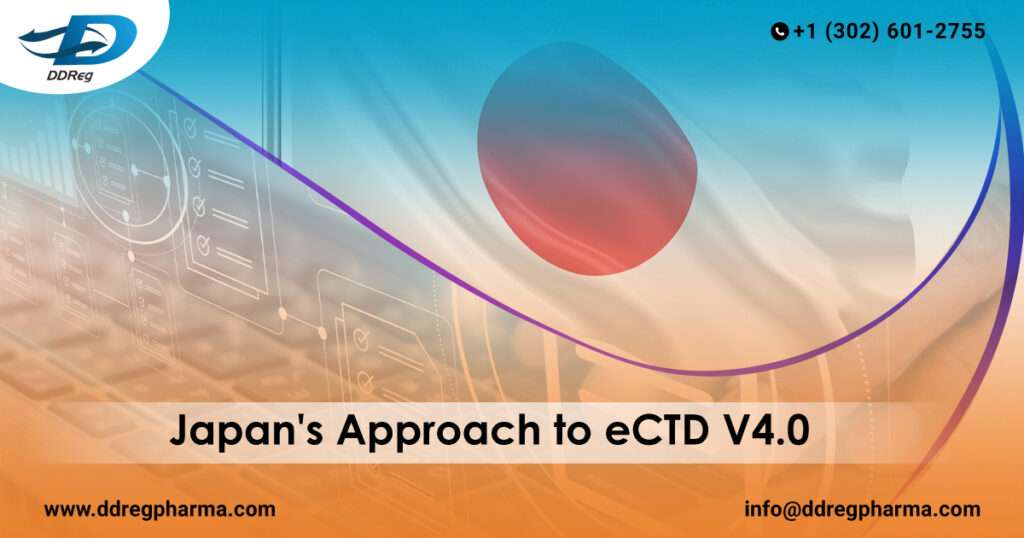Understanding Japan's Move to eCTD 4.0
This move aligns Japan with international standards set by the International Council for Harmonisation of Technical Requirements for Pharmaceuticals for Human Use (ICH), ensuring that the pharmaceutical industry within the country meets global benchmarks for electronic submissions.
In contrast to other regions that implemented a phased approach, Japan aims for mandatory adoption of eCTD 4.0 by 2026. The recently released “ICH Electronic Common Technical Document (eCTD) v4.0 Implementation Guide in Japan v1.5.0” provides a comprehensive framework for this transition.
Connect For eCTD Publishing Submission ServicesThe eCTD v4.0 is a major upgrade from its predecessor with new submission and review capabilities for pharmaceutical documentation. This document describes the details of how eCTD v4.0 is to be implemented, detailing how applicants should prepare and submit their documentation to PMDA.
The guide ensures that submissions meet both ICH standards and Japan-specific requirements. It also introduces a Japan-specific controlled vocabulary (JP CV) meant for capturing context peculiarities unique to Japan.
eCTD 4.0 Requirements in Japan: Submission Pathways
Components of an eCTD Application
An eCTD application in Japan must include:
Folders: Organized according to specific guidelines.
eCTD v4.0 XML Messages: The backbone of the submission, containing metadata and references.
Files: Categorized into ICH CTD documents, Japan-specific documents, electronic study data, and additional files such as checksums.
Submission Pathways
There are two primary methods for submitting eCTD applications to the PMDA:
- Electronic Study Data System: This online gateway allows for eCTD applications and electronic study data. It is guided by the “Notification on New Drug Applications Using the Gateway System” and related technical conformance guides.
- Direct Submission to PMDA Reception: Involves physical submission via DVD-R/RW or BD-R/RE media, with specific labeling and formatting requirements.
Ensuring Data Integrity and Security
Data integrity is a major feature of eCTD v4.0. All submissions should include a checksum file (sha256.txt) with checksums for all submitted files except the checksum file itself. This checks any data corruption or tampering and thus ensures that the submission remains integral.
Detailed XML Specifications
The guide provides exhaustive details on XML message construction, essential for creating compliant eCTD submissions. Key aspects include:
- Character Encoding: UTF-8 encoding is mandated for consistency and compatibility.
- Handling Empty Elements and Attributes: Elements such as ‘integrityCheck’ must not be empty or contain dummy values. Compliance with specified attributes and values is crucial.
- Submission Unit Element: This element aggregates documents and data for submission, with strict rules governing its structure and content.
- Priority Number and Context of Use Elements: These elements manage document ordering and positioning within the submission, ensuring clarity and organization.
Business Rules and Compliance for eCTD Submission in Japan
Strict business rules underpin the eCTD submission process. These rules prevent common errors, such as multiple ‘submissionUnit’ elements or missing required elements, which would result in submission rejection. The rules also ensure proper management of the ‘priorityNumber’ and ‘contextOfUse’ elements, which are critical for document organization and reference within the eCTD framework.
How can pharmaceutical companies prepare for eCTD 4.0 submission in Japan?
Transitioning to eCTD 4.0 can seem daunting, but with a structured approach, pharmaceutical companies can make the shift smoothly. Here’s a concise guide to help you adapt:
- Familiarize yourself with eCTD 4.0 guidelines -: Review the updated guidelines provided by PMDA on eCTD 4.0. Attend workshops or webinars offered by regulatory experts to gain insights into the new requirements.
- Assess your current submission processes -: Conduct a thorough evaluation of your existing submission workflows and systems. Identify gaps where current practices may not align with eCTD 4.0 standards.
- Upgrade your software and tools -: Invest in eCTD-compliant submission software that supports the new structure and functionalities. Ensure that the software can handle the new data management features, such as modular submissions.
- Reach out to regulatory service-providing consultants -: Partnering with reliable consultants, like DDReg Pvt Ltd, helps companies stay compliant with evolving regulations while allowing internal teams to focus on core operations. These experts offer tailored strategies and up-to-date knowledge, minimizing risks and providing a competitive advantage.
- Train your teams -: Provide training sessions for your regulatory affairs team on the specifics of eCTD 4.0. Incorporate hands-on practice with the new software to ensure that staff are comfortable and proficient.
- Implement a pilot submission -: Conduct a pilot submission using eCTD 4.0 to identify any issues before full-scale implementation. Gather feedback from your team and address any challenges encountered during the pilot phase.
By following these steps, pharmaceutical companies can effectively transition to eCTD 4.0, ensuring compliance and positioning themselves for success in Japan’s regulatory environment.
Conclusion
The implementation of eCTD 4.0 in Japan marks a pivotal moment in the regulatory landscape, with far-reaching implications for both local and international pharmaceutical companies. ICH Electronic Common Technical Document (eCTD) v4.0 Implementation Guide in Japan v1.5.0 is a document that outlines the technical requirements for timely, compliant and secure submission of pharmaceutical information. This transformation would likely encourage Japan to enter the international drug market while maintaining stringent criteria for the production and authorization of medicines. Embracing this new era of regulatory submissions is not just about compliance; it’s about unlocking the potential for innovation and growth in a rapidly evolving market.
DDReg’s Regulatory Services in Japan provide support and development of customized strategies during all regulatory phases to ensure high-quality and timely submissions. Read more from our experts here: Accelerating Product Registration with SFDA’s Priority Review

